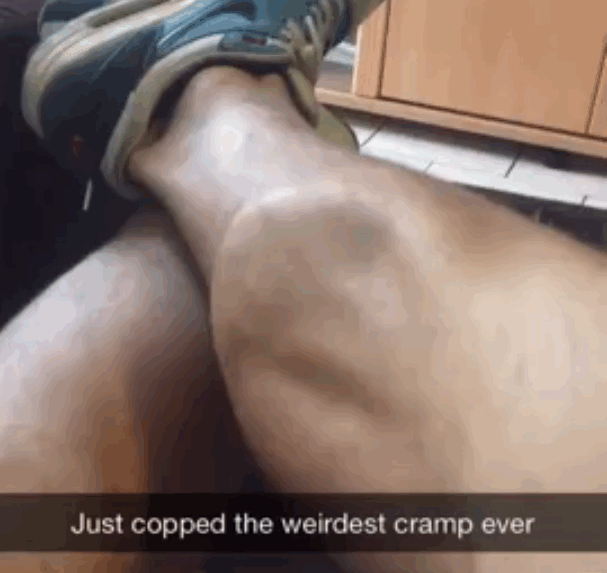You may have had leg cramps before, but it's unlikely you've had one this bad. Check out this guy's unbelievable, skin-crawling cramp.
His leg muscle undergoes some extreme contraction, and makes his calf look like a deflated football. As he stretches his foot, his skin appears to bubble. Take a look:
The viral video's title suggests this could be "a bunch of worms under this dude's skin," but fortunately for this guy, it's most likely a painful run-of-the-mill cramp, which so commonly occurs in the leg muscles that its got a name - the charley horse.When a muscle cramps, it contracts similar to how it would normally, usually stronger than it would and without your control over it. It can occur while sleeping, resting, or during exercise.
But, "there are no worms here," Mark D. Miller, head of University of Virginia's Sports Medicine division, told Business Insider in an email. "The muscles violently contract and spasm giving the impression of bubbling. The skin itself just reflects the action of the underlying muscle."
According to the American Academy of Orthopedic Surgeons, "a cramping muscle may feel hard to the touch and/or appear visibly distorted or twitch beneath the skin" - which is what makes it look like a parasitic worm burrowing under the skin. Cramps can last anywhere for a few seconds to 15 minutes, or even longer.
Cramps aren't just unsightly, they can be quite painful, too. The muscle stiffens and shortens, which causes an extreme, tight pain. They can happen more than once in a short period of time and some people can experience pain and soreness in the muscle days after the cramp.
Almost everyone has experienced a cramp. They can happen in any part of your body, even in your hand. Most medical websites cite muscle fatigue, dehydration, and electrolyte deficiencies to more serious ailments like kidney failure as causes, but experts still can't come to a consensus on what causes muscle cramps when they occur in otherwise healthy adults.
"The problem with muscle cramps is that it is difficult to find the cause, and sometimes difficult to treat," Miller said.
Some suggestions for prevention include stretching before exercise, drinking water or taking electrolyte supplements like calcium and magnesium. In the midst of a cramp, try stretching until the cramp subsides, massaging the affected muscle, or applying heat.

